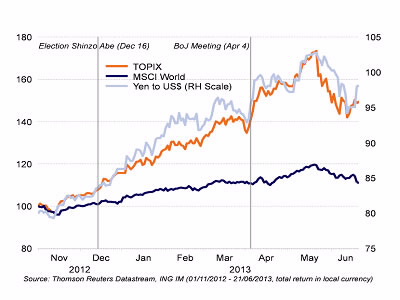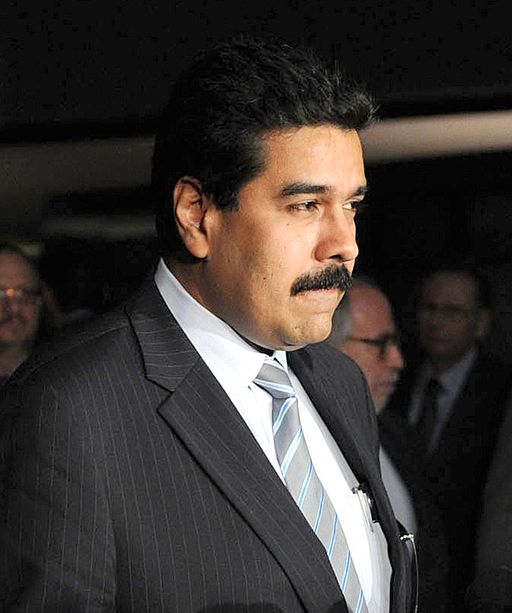Wealth managers are struggling with the challenges posed by the economic environment and continuing regulatory pressures, according to a new PwC report published today. PwC’s report, Navigating to tomorrow: serving clients and creating value, includes findings from PwC’s 2013 20thanniversary Global Private Banking and Wealth Management Survey. Survey participants suggest that the wealth management industry is moving away from simply providing products towards delivering solutions and advice to clients. Trust, reputation and brand will likely all play a greater role in client propositions and clients’ perception of value, says PwC.
Despite the resurgence of global wealth to nearly pre-2008 levels, the industry is facing significant margin pressure caused by increasingly stringent and costly regulatory requirements, uneven growth across geographic markets, loss of certain type of fees and subdued client activity. These dynamics are further compounded by shifting demographics and existing challenges around operations, technology, and talent management. Surviving and succeeding in this environment requires changing to a more consultative business model that places a premium on “doing the right thing,” says PwC.
Overall key findings include:
- Compliance replaced reputation as the top risk management concern, as wealth management firms struggle to keep pace with the scale, speed and costs of current and planned regulatory change.
- Infrastructure transformation will redefine how wealth managers serve clients.
- The cost of complying with regulation will continue to rise, with respondents forecasting that risk and regulatory compliance expenses will account for seven percent of annual revenue in two years, up from five percent today. Significantly, participants from the Americas project even higher costs, a nearly twofold increase to nine percent in the next two years.
- Attracting and developing quality client relationship manager (CRM) talent has become a critical priority for the wealth management industry.
Key findings for the Americas:
- Americas respondents consider New York, London and Miami to be the most successful international centres. Globally, Switzerland currently tops the list.
- Cost to income ratios are significantly lower for the Americas with firms targeting forty eight percent for 2014 as compared to sixty four percent globally.
- Americas respondents are nearly twice as likely to use new technology to communicate with their wealth clients (43% of Americas firms currently use PDAs and mobile tablets compared to 26% globally).
- Americas firms are making significant investments in core processes and technology as reflected in substantially higher operations and technology budget forecasts.
The report, which surveyed 200 institutions from more than 50 countries, found that the wealth management industry is at an inflection point, precipitated by continuing regulatory pressure, a challenging macro-economic environment, margin compression, changing demographics and trust challenges.
Specifically, PwC’s survey found that the industry must confront five areas of transformative change that will define business success:
Markets and Clients
With more new and innovative entrants in the field, an in-depth understanding of an increasingly diverse and disparate client base is essential to retaining a competitive edge. The industry should become more agile in using data analytics and other resources to pinpoint what clients really value and how much that value is worth to them. Findings from the survey include:
- Newly emerging wealth markets are set to outpace established emerging markets while traditional sources of wealth such as North America and Western Europe will experience lower growth.
- Women represent a significant but underleveraged growth opportunity. Though they currently comprise one third of the client base, only eight percent of firms surveyed focus on gender in their segmentation approach.
- Generation Y has unique characteristics not shared by their predecessors that must be understood and addressed to attract new and preserve existing relationships. Respondents noted that a decision by the next generation is the third most common reason clients leave a private bank, indicating a need to build more relevance for this segment. This aligns with survey findings indicating that wealth managers are not confident that their talent management strategy is conducive to meeting the needs of next generation heirs and millennials.
- Americas respondents indicated they are almost three times as confident in their ability to meet the needs of the millennial generation.
“In Western Europe growth is slow, while North America shows moderate growth, and in the emerging markets growth remains relatively high but has slowed in some areas. To these markets, we can add a further group of nascent emerging markets which are accumulating new wealth most rapidly, with net new money growth forecast as 16% in 2013. The multi-speed wealth management market is here to stay and wealth managers should embrace this,” said Jeremy Jensen, EMEA leader, global private banking and wealth management, PwC. “Retaining clients remains a focus for wealth managers. Changes in personal circumstances are cited as the greatest reason for clients leaving, but the fact that ‘a decision by the next generation’ is the third most common shows both the importance and the challenge of better managing inter-generational wealth transfer. Wealth managers should improve their understanding of clients’ extended family issues to capitalise on the inter-generational opportunity.”
Risk and Regulation
In this year’s survey, compliance replaced reputation as the top risk concern, as wealth management firms struggle to keep pace with the scale, speed and costs of current and planned regulatory change.
- Participants cite client and suitability risk as the second greatest area of concern after compliance both today and two years from now.
- While the current approach to risk management centers around compliance and loss prevention initiatives, risk quantification and stakeholder value integration will assume greater priority in the next two years (this is a twenty eight percent increase for risk quantification and twenty five percent increase for stakeholder value/integration, respectively).
- The cost of regulation will continue to rise, with respondents forecasting that risk and regulatory compliance will account for seven percent of annual revenue in two years, up from five percent today.
- Tax information exchange leads the list of specific regulatory concerns, followed by client privacy/data protection and tax amnesties.
“Compliance and risk management is here to stay; private banks should accept this as reality, and that business as usual means doing things the right way, with the right people and right skills. The ability to understand and manage the avalanche of regulatory and risk issues, such as cross border transactions, tax transparency and sales practices will likely require private banks to continue investing heavily into systems and training to ensure that they are able to do business in a profitable, but compliant way,” said Justin Ong, Asia Pacific leader, global private banking and wealth management, PwC. “There will likely be a lot of change management happening in private banks globally as they start to build in processes and policies developed in the past few years to deal with the new operating environment.”
Human Capital
In light of aggressive competition and unprecedented trust erosion, attracting and developing quality client relationship manager (CRM) talent has become a critical priority for the wealth management industry. Setting the tone from the top and aligning rewards and incentives with ethical behavior is integral to rebuilding reputational equity and reclaiming “trusted advisor” status. In our survey:
- Hiring experienced CRMs and improving overall skill levels is one of the top strategic considerations for senior leaders in the next two years.
- With remuneration reported as the leading cause of attrition (seventy percent), firms are reconsidering reward and incentive structures in an effort to balance talent goals and stringent new rules around variable compensation.
- The key attributes for successful CRMs are evolving in tandem with new client demands and business priorities. Most notably, specialized product knowledge jumped in significance from ninth place to second place and cross-selling took on substantially more prominence as well.
- CRM objectives are changing dramatically with findings indicating that revenue growth will replace both net new money growth and gross return in AUM as the leading performance metric in the next two years.
- Profitability by CRM and managing the cost of servicing are also expected to become substantially more important, rising from thirty five percent to forty five percent and twenty six percent to forty four percent, respectively.
- Firms are focused on enhancing long-term incentives tied to goals.
“The required attributes of a successful CRM are different today – the bar is rising as business models evolve – requiring CRMs to have more specialised and detailed product knowledge. Communication and other soft skills have become increasingly important,” continued Jensen. “Wealth managers should be courageous and proactive if they are to improve external public perception and engender higher levels of client confidence. CRMs will likely play a critical role as the industry seeks to rebuild trust.”
Operations and Technology
The quest for operational efficiency and differentiation through technology continues as firms increase investments to streamline processes, improve efficiency/productivity and mitigate risk. In our survey:
- Respondents pinpointed a superabundance of manual processes as the leading challenge of operations and technology infrastructure by a substantial margin. However, more than half of participants (54%) are optimistic that they will achieve predominantly common processes and automation within the next two years – a threefold increase from today (17%).
- Findings indicate that wealth management firms expect to see significant gains from investment in end-to-end processes and technology within the next two years.
- With client service taking on even greater priority, digital interaction projected to double in the next two years, the bulk of technology investments will be earmarked for CRM tool support and mobile, social and digital connectivity/resources.
- Notably, despite the growing emphasis on digital interaction, less than a quarter of respondents (24%) feel that their IT capability is sufficiently equipped to deliver an effective digital service strategy to clients.
“The wealthy by every demographic are more technology enabled than ever before. They tend to be part of connected digital communities who share their ideas and opinions. They are willing to do more of the background research and investigation on their own. Their relationships with their advisors have taken on a hybrid or multi-media characteristic blending the trusted advisor with advanced technology tools analytics and social media. This impacts the core technology infrastructure of wealth managers. Distinct from traditional transaction processing, which must absolutely be done correctly and profitably, technology budgets are increasingly focused on data, analytics,” said C. Steven Crosby, Americas leader, global private banking and wealth management, PwC. “Today wealth managers should be able to provide data for clients who want it anytime, anywhere and on any device.”
Products and Services
As value chain dynamics and client priorities change, firms are aiming to combat commoditisation by shifting their focus to value-added financial planning services and reconsidering how they develop products. In our survey:
- Only one third of firms plan to engage in revenue sharing and retrocessions during the next two years as compared to half today.
- With commission revenues dwindling, seventy one percent of senior wealth management executives expect that, two years from now, their business model will encompass broader financial and wealth planning solutions, up from fifty six percent.
- Fewer products will be manufactured in-house in future as firms continue to transition to a hybrid approach that combines proprietary and third party strategies (seventy six percent will use a hybrid approach in the next two years versus sixty five percent today).
- The transparent unbundling of products and services is creating opportunities for new entrants within the wealth value chain.
“Our respondents are struggling with transformational change. The products and services the wealthy are seeking today are far different from those of the past. Clients are demanding best of breed products with fee structures they can readily understand and evaluate on their own. More importantly they are now looking for something extra from their wealth managers. Today the wealthy seek guidance and direction on investments, family, philanthropy, retirement and long term health care,” continued Crosby. “This is more sophisticated financial planning and less transaction focused. Increasingly this part of the customer experience is becoming digital with new tools and capabilities.”








